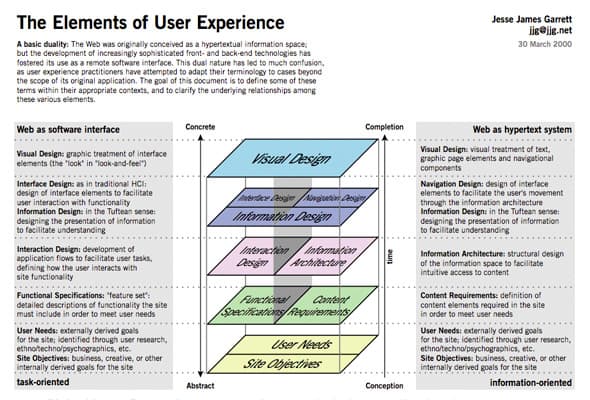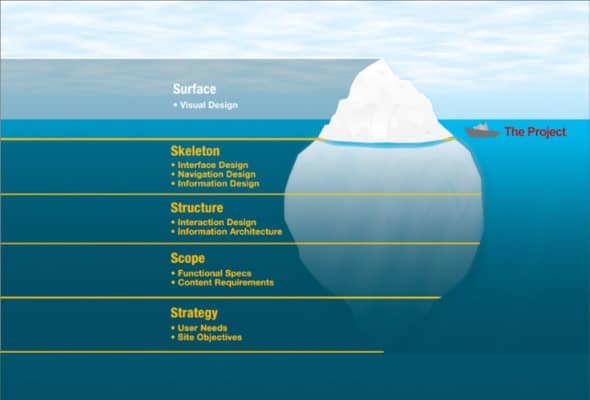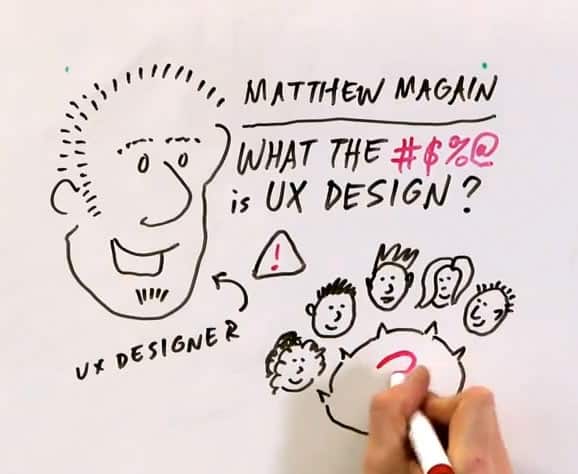What the heck is UX Design? And what does a UX Designer actually do?
These are difficult questions to answer, because if you ask 5 different people you’re going to get 5 different answers.
In the following video I’m not only going to explain what UX Design is, but also why I believe you should find out more about it, regardless of your job.
UX stands for User Experience. And when we say “user experience”, we’re referring to:
- what,
- when,
- where,
- why, and
- how
someone uses a product—as well as who that person is. So: what, when, where, why, how, and who—these cover the user experience of a product, which is pretty much everything that affects a user’s interaction with that product.
As you can imagine, A UX Designer, who is someone who designs those interactions, is constantly asking a ton of questions. If you’re someone who naturally questions things, UX Design could be a great career move for you, because it’s the answers to these questions that shape a product’s design.
Of course it’s not all about the user’s needs—UX Designers need to take into account a business’s needs as well. It’s no use having a product that people love, if it doesn’t help a business achieve its goals—that’s not a product, that’s a side project. A UX Designer aims for that sweet spot where user needs and business needs overlap.
How do they do this, other than by asking lots of questions?
Well, a UX Designer follows what’s called a user-centred design process. We use a set of tools and techniques to take the user’s needs into account at every stage of the product’s lifecycle. I say product, because these techniques apply to web apps, mobile apps, desktop apps, or even physical products.
OK, that’s all well and good—but why should you care?
I’m going to give you four reasons why I believe this stuff matters so much and you should learn more about it. Note this list doesn’t include the obvious one, which is the fact that paying attention to UX results in you building a product that’s awesome instead of one that people hate using (hopefully that’s a given).
The reasons why I think you should learn more about UX are:
- You’re probably doing some of this already. One thing I’ve learned is that when you understand how it is that you do what you do, you become infinitely better at it. Like the fable about the centipede who, when asked how it was that he walked, couldn’t give an answer. But when he picked himself up, and examined and flexed each of his hundred legs, he danced the most beautiful dance in the world.
- User-centred design is a process, which means it’s practically scientific. It’s like taking the scientific method—using analysis and measurement—and applying it to humans and their behaviour. And that’s fascinating to me, this notion that designers are artistic geniuses with a penchant for cutting off their own ear—it’s nonsense. This is a science! Quasi-science. Which leads me to the third reason that UX matter.
- It’s not that hard. Especially for people who are already technically inclined. I don’t want to go putting myself out of a job here, but you know what? This stuff is not rocket surgery, to borrow from Steve Krug. Anyone can learn the basics of user testing and card sorting and writing scenarios and creating wireframes. It’s actually very straightforward. Which is a good segue to the fourth reason you should care about UX, and that’s that …
- It’s fun! This stuff is fascinating! A career as a UX Designer is interesting, it’s challenging, it’s rewarding, it pays well, and there’s a very low barrier to entry. A lot of people feel uncomfortable calling themselves a “designer”, because they’re no good at choosing a typeface or a colour palette. Get over it! UX Design is the design behind the visuals. Visual design is just one small part of it. It’s an important part, but some of the best UX Designers I know actually aren’t that great at visual design, but they’re really good at those other areas that are so important.
And that’s pretty much it! So while you might hear terms like information architect, user interface designer, interaction designer, user researcher, or whatever, essentially these are all people with different backgrounds—they might specialise in marketing or technology, or maybe their strengths are in user research, social media or come from a customer support background. Either way, they’re all asking a ton of questions and following a quasi-scientific process to do the design behind the visuals. And they’re having a blast doing it.
That’s what I’d like to leave you with—that if this stuff interests you, you may very well be well placed to have a promising career as a UX designer.
We started UXMastery.com to help newcomers to UX Design learn how to get better. I hope you’ll stick around!
Keen to get started? Check out our ebook, Get Started in UX: the complete guide to launching a career in user experience design.
Related








Hi guys!
Just saw Matt present this live at UX Australia in Brisbane!! Completely awesome, can’t wait to share it with pretty much EVERYONE I work with and for. Thanks so much!! @HezVegas
Hello Matt, Thanks for making such a short yet interesting and informative video. Loved the way you explained everything and yes your drawings were pretty cool :) all the best.
Thanks so much for the kind words Heather! Appreciate the support.
This video explains the fundamentals of UX and typical tools and approaches better than any written description or static diagram I’ve seen. This will now be where I send people when they want to know what the heck it is I do (and why it differs from UI design).
Great to hear Nathanael! Thanks for the lovely comment.
Cheers
Matt
Matt, this is the best explanation of UX design I’ve ever seen. Short, easy to understand, clear message and fun. Really well done. Going to share… :o)
Thanks Stephen!
Thanks Matt for that lovely talk at UXAustralia 2012. I have been looking for this presentation until Donna sent me a link to Uxmastery.com.
I am going to show this to some of the students whom I am mentoring for a UX design project, with your permission.
Hi Matt,
Excellent presentation. Love how you point out that UX is not rocket surgery. I’ve been in the industry for over 17 years and used to have to do Project Management, UX design, and Account Management all at once back in the day. While I totally love and respect the UX leads I work with now, I also know that anyone can learn the basics of user testing, card sorting, writing scenarios, and developing wireframes.
I look forward to reading more on your site.
~Melissa
Thanks for the kind words Melissa. Glad to have you on board!
Hi Matt,
I translated your video into Portuguese and would like your permission to use it on my personal blog:
http://www.amara.org/en/videos/iynFtq7DEhh9/pt-br/495958/
Fantastic Adriano! Thanks so much for this!
superb experience…!!!
Really enjoyed the whiteboard video!! Nicely done.
Hello Matt, Thanks for making such a short yet interesting and informative video. Loved the way you explained everything and yes your drawings were pretty cool :) all the best.
I saw you speak at General Assembly on UX a few weeks ago, and also love your site. Thanks so much for creating such a great hub of info! :)
Have a quick Q and wondering your opinion —
What’s the difference between Interaction Design (and/or, HCI), User Experience, and User Interface Design? If they were on a Venn Diagram, I would imagine that all 3 disciplines would overlap quite a bit.
I am confused because they all seem to be user-centered fields that aim to unpack the psychology of decisions and leverage organic cognitive inclinations in regards to human interaction with a digital/other/physical device or interface.
I’ve tried reading online the definitions and examples but they all seem to be very similar apples falling from the same tree. Are there any clear differences, aside from theory, but in real world practice and/or job descriptions?
Thanks for your input!
[…] again, as mentioned by Career Foundry, involving a UX Designer in the project can reduce the amount of development rework by up to 50%, and can reduce […]